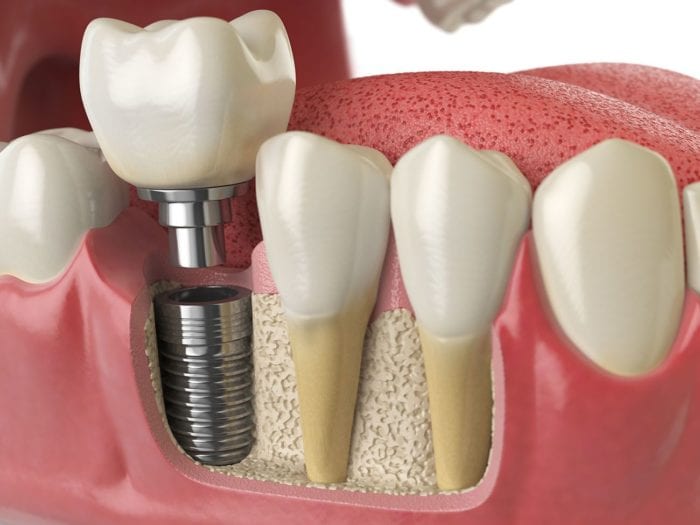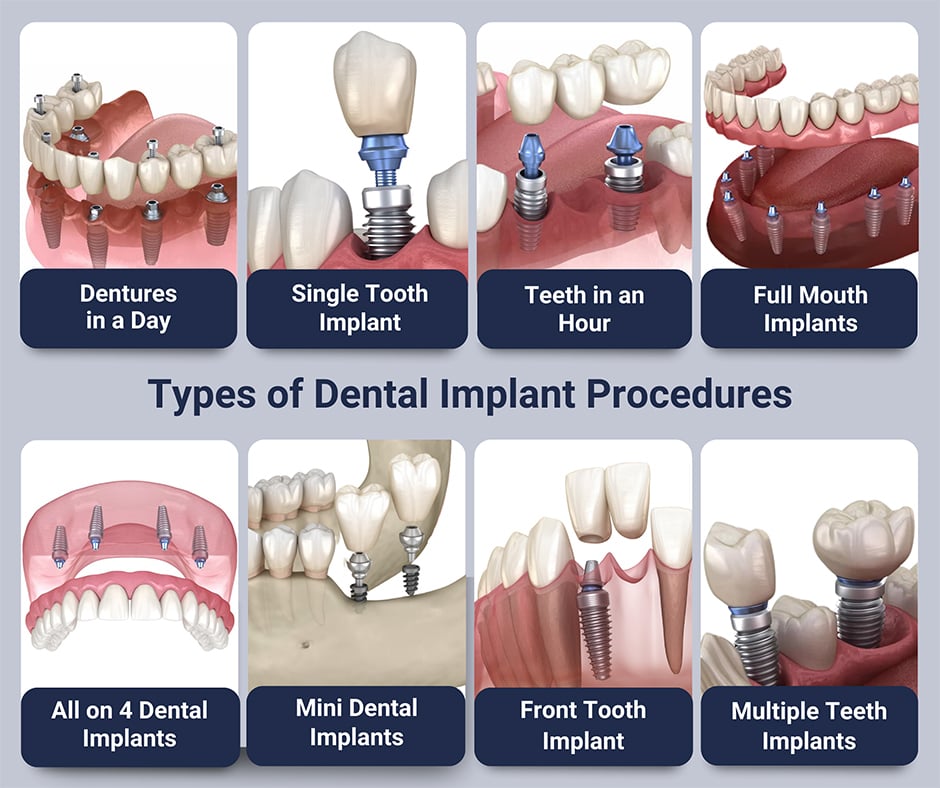Dental Implants Things To Know Before You Buy
Table of ContentsHow Dental Implants can Save You Time, Stress, and Money.Rumored Buzz on Dental ImplantsDental Implants Fundamentals ExplainedNot known Details About Dental Implants
are medical gadgets surgically dental implanted right into the jaw to bring back a person's ability to eat or their appearance. They give assistance for synthetic (fake) teeth, such as crowns, bridges, or dentures. When a tooth is shed as a result of injury or condition, an individual can experience complications such as fast bone loss, defective speech, or modifications to chewing patterns that cause pain.
Structure of The Oral Implant System choosing oral implants, speak with your oral copyright concerning the possible benefits and risks, and whether you are a candidate for the treatment. Points to think about: Your overall health and wellness is a crucial variable in identifying whether you are a great candidate for oral implants, for how long it will certainly take to recover, and how much time the implant may remain in place.
Smoking cigarettes may impact the healing process and decrease the lasting success of the dental implant. The recovery process for the dental implant body may take numerous months or longer, during which time you typically have a temporary abutment in location of the tooth. the dental implant procedure: Meticulously follow the dental hygiene instructions offered to you by your dental service provider.
Dental Implants Things To Know Before You Get This
Implant failure can cause the requirement for another surgery to repair or replace the dental implant system. Brings back the capacity to eat Recovers cosmetic appearance Aids maintain the jawbone from reducing because of bone loss Protects the health of the surrounding bone and gums Helps maintain adjacent (close-by) teeth secure Boosts top quality of life Damage to bordering all-natural teeth during implant placement Injury to the surrounding cells throughout surgical procedure, such as sinus opening Injury throughout surgical procedure (for instance, crack of surrounding jawbone) Insufficient feature, such as seeming like the teeth do not bite with each other normally A feeling that the tooth hangs or turning in location arising from a joint screw loosening up Implant body failing (looseness of the implant body) due to systemic infection, which might be extra likely in patients with unrestrained diabetes as a result of regional infection in bone and gums supporting the dental implant body due to postponed healing, which may be most likely in clients who smoke Difficulty cleaning the periodontals around the implant, leading to poor dental hygiene Neglected gum disease Post-surgical numbness as a result of nerve impingement or damages Constantly inform health treatment companies and imaging specialists that you have dental implants prior to any magnetic vibration imaging (MRI) or x-ray treatments.
FDA is not aware of any type of unfavorable events reported for MRI or x-ray treatments with oral implants. Oral implants systems are typically made from materials that comply with global agreement requirements of the International Company for Standardization (ISO) or ASTM International. These criteria have information of what makes a secure product.
Oral dental implant systems are evaluated according to worldwide agreement requirements. Biocompatibility screening, to reveal that physical contact with the device does not cause complications like irritability or allergic reaction, is component of the analysis that helps guarantee the materials in the dental implant system are secure and do not cause unfavorable impacts when dental implanted in individuals.

Dental Implants Fundamentals Explained
Some individuals are not qualified for dental see post implant surgery. It is for oral specialists to operate on people with: severe illnessuncontrollable metabolic diseasebone or soft cells condition or infectionIf these issues are solved, an individual can have the surgical treatment. Dental Implants. In, oral cosmetic surgeons avoid running on people with: If individuals with any one of the above go through oral implant surgery, there is a greater threat of the implant falling short
Some people have a jawbone abnormality that avoids enough bone for an implant from establishing. In such instances, a specialist may require to do a ridge alteration. This includes lifting the gum to subject the location of deformed bone. this The surgeon will then make use of a bone or bone replacement to repair and build up the area.
Oral dental implant surgery is a tailored procedure. It's not the exact same for everybody. Yet the complying with gives a basic introduction of what you can expect your dental expert, oral cosmetic surgeon, periodontist or prosthodontist to do: Place the implant surgically. Give you time to recover. Attach the post and last crown, bridge or denture.
Next, your specialist will very carefully put the dental implant into your jaw. If your dental implant is near the front of your mouth, your dental expert will make a short-term tooth for you to put on until you recover.
The Dental Implants PDFs
Throughout the recovery stage, your jawbone must fuse to the dental implant. This procedure can take anywhere from 3 to 9 months.
When your implant heals, your dental practitioner can connect the abutment (small port blog post) and your last remediation (crown, bridge or denture). This generally takes regarding one hour to complete and may call for check out this site a 2nd small surgical procedure. You should not feel any discomfort throughout your oral implant treatment due to the fact that your copyright will certainly make use of medication to numb your gum tissues.